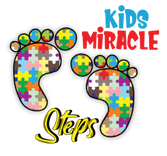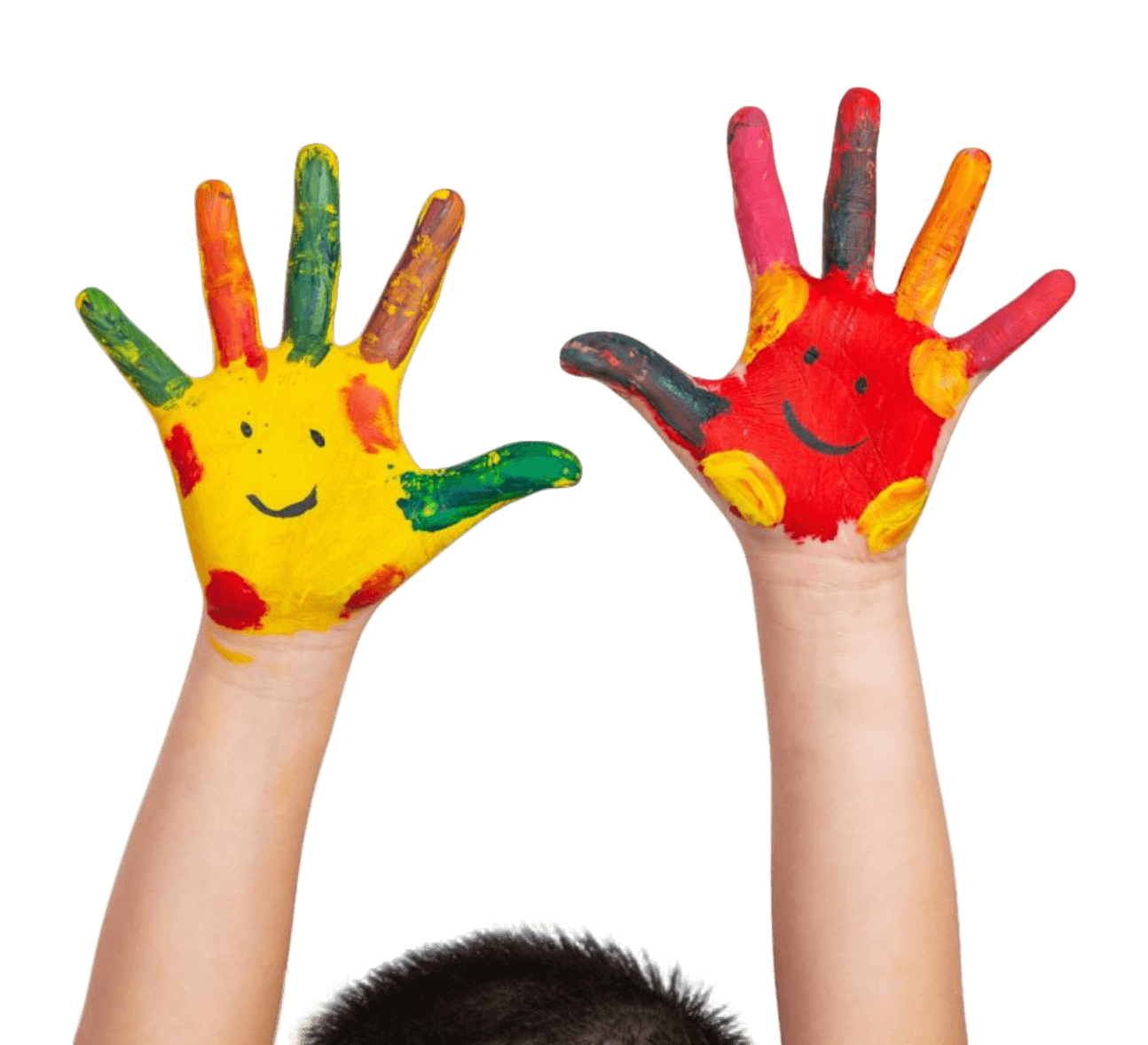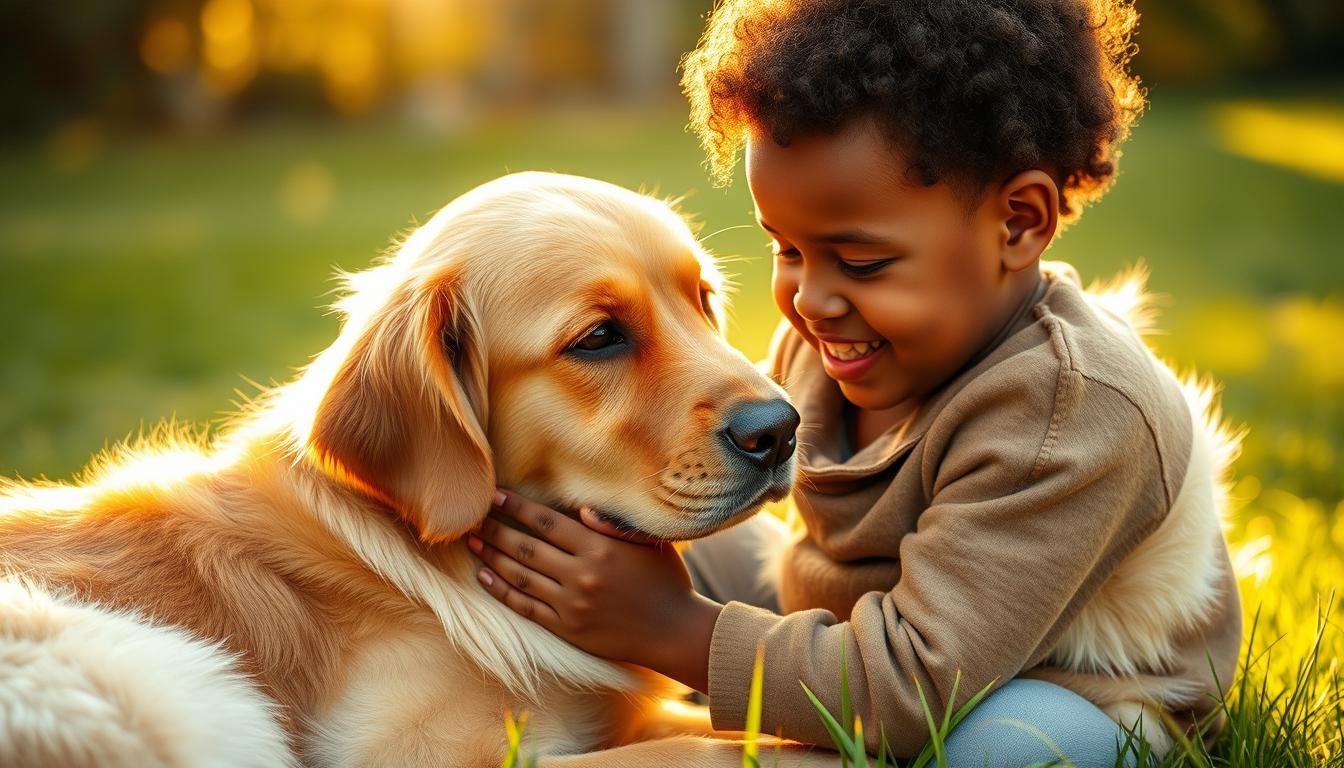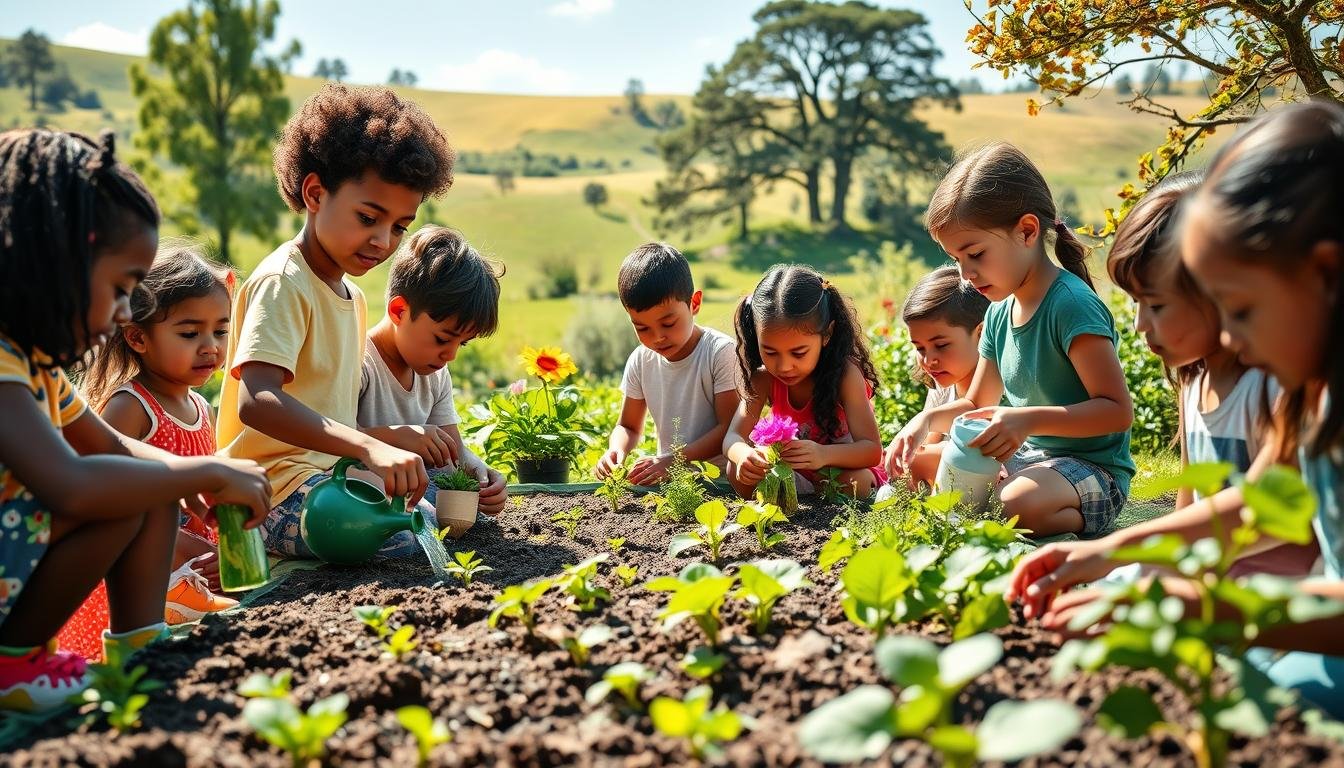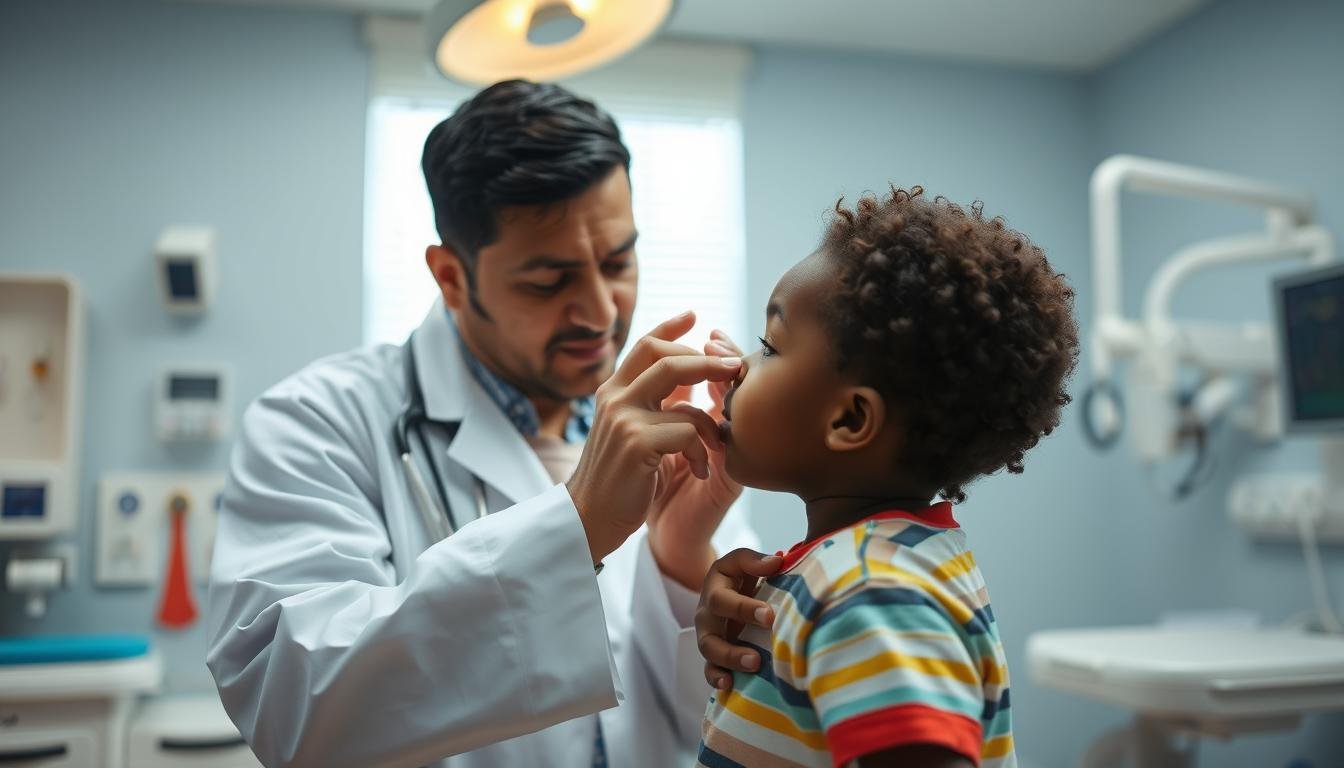Many parents dream about their child having a dog to grow up with. They imagine heartwarming moments and a special bond that makes the family closer. But, adding a family dog to the mix with lively, unpredictable children needs careful thought. It’s about knowing how kid-friendly dogs can positively affect your kids’ growth emotionally and socially. As you blend parenting with pets, you’ll find joys and hurdles in raising a dog with a kid.
Consider how toddlers’ big feelings and endless energy might be a lot for a calm dog. This is why we want to guide you through the journey of raising dogs and kids together. We’ll offer tips on teaching kids to respect their pets and making sure the pets are okay with the kids around. Our advice aims to help you create a safe, loving space for children and pets. This encourages your child to be empathetic and builds a deep friendship based on trust.
We’re here to help you achieve that beautiful image of your child and dog playing together in the sunshine. They’ll grow and learn from each other, creating a bond that can’t be broken. With our help, having a peaceful home with both pets and children can be more than a dream—it can be your reality.
Understanding the Benefits of a Family Dog
Getting a family dog can really make your kids’ lives better. They offer so much love and help kids grow in many ways. Dogs become amazing friends who support kids emotionally and socially.
Kids learn to talk and connect better by spending time with a dog. This helps them care for others and take on responsibilities. It’s great for growing up. Plus, dogs make kids more active by playing with them, which keeps them healthy.
| Benefit | Description | Impact on Child Development |
|---|---|---|
| Emotional Support | Dogs offer comforting, non-judgmental companionship. | Improves emotional regulation and reduces anxiety. |
| Social Skill Enhancement | Regular interaction with a pet improves communication and empathy. | Helps develop key social competencies necessary for school and life. |
| Responsibility | Caring for a pet teaches responsibility and fosters a sense of accomplishment. | Encourages maturity and accountability in everyday tasks. |
| Physical Activity | Playing with dogs encourages a more active lifestyle. | Promotes physical health and well-being, leading to a more balanced lifestyle. |
Dogs do a lot more than keep us company. Choosing and training the right dog can play a big role in a kid’s growth. They help kids become emotionally, socially, and physically stronger. It’s key to see all the good things a family dog brings into our lives.
Setting Boundaries: Kids and Dogs
Creating a peaceful home means teaching kids and pets about boundaries. These rules are key for keeping everyone safe and preventing dog bites. Kids should learn to approach pets carefully and always under watch. They need to ask before touching any animal. This teaches them to respect the pet’s space and reduces potential dangers.
Teach children the right way to pet animals. Show them to be gentle, avoiding the face or tail. This safe approach protects both the child and the pet. Pets also need their own quiet spots at home. Baby gates work well to give dogs a break from busy kids.
Here’s how to set these rules right:
- Always watch over pets and kids when they’re together, especially at first.
- Help kids spot when their pets are uneasy, like growling or moving away.
- Use baby gates to make safe areas for pets when needed.
- Show kids to be kind to pets, teaching soft touches over rough play.
Firm rules help keep pet interactions safe and work towards stopping dog bites. Early education on this keeps children safe and shows care for pets’ well-being.
These rules make time with pets safe and fun. By teaching respect, we make a family where everyone’s needs are considered. It leads to happier lives for both kids and pets.
Introducing Your Dog to Your New Baby
Bringing a new baby home is exciting but comes with challenges. It’s important to prepare your dog for this big change. We’ll show you how to introduce your dog to your new baby safely.
It’s important to start introductions the right way. You can get your dog used to baby smells and sounds early on. Using baby lotion or playing baby cries can make these new things less stressful for your dog.
Here is a practical table to help you manage your dog’s training and adjustments before the baby’s arrival:
| Training Skill | Description | Purpose |
|---|---|---|
| Basic Obedience | Teach commands like sit, stay, and come. | Control your dog around the baby safely. |
| Leave It/Drop It | Train your dog to ignore baby’s toys and gear. | Prevent possessive or curious behaviors towards baby items. |
| Desensitization | Introduce baby-related noises and smells. | Reduce anxiety or fear around the baby. |

Changing your dog’s routine is also key. If your dog likes a set schedule, try changing feeding and walking times. This prepares them for the new baby’s routine. Always use positive reinforcements when your dog behaves around baby items.
After the baby comes, always watch your dog and baby together. Be clear about boundaries and keep a close eye on their interactions. With preparation, your dog and baby can have a safe and happy relationship.
These tips on newborn safety and pet introductions aim to give you confidence. Remember, introducing your pet to a new baby is gradual. With patience and the right training, your family’s bond will grow stronger.
Training Your Dog to Be Kid-Friendly
Making your dog kid-friendly requires thoughtful training. It’s crucial to use obedience training, therapy dog exercises, and positive reinforcement. Training them for safe interactions with kids is key, especially since kids can be surprising.
Obedience training teaches vital commands like ‘sit,’ ‘stay,’ and ‘leave it.’ These are key for controlling your dog around kids. This training improves the dog’s impulse control and response to commands. Therapy dog training also teaches how to approach kids calmly and gently.
Using positive reinforcement is critical. Reward your dog for good behavior with treats, praise, or playtime. This makes learning fun for them and strengthens the link between following commands and getting rewards. It helps in repeating good behaviors and strengthens the bond with your child.
| Command | Purpose | Benefits |
|---|---|---|
| Sit | Controls the dog’s movement | Prevents jumping on children |
| Stay | Keeps the dog in one place | Ensures safety when kids are playing |
| Leave it | Prevents grabbing children’s toys | Reduces risk of unwanted behavior |
| Go away | Directs the dog to move away from the child | Provides space when needed |
By using these training methods, your dog will safely enjoy time with your kids. The aim is to make sure both your child and dog can live happily together.
Teaching Your Child How to Interact with Dogs
Teaching your kids to safely and kindly play with your family dog is key. It helps build a good relationship between them. Making learning about pets part of everyday life helps kids understand how to treat pets right. It shows them they play a big part in taking care of the dog.
Start by teaching your child to pet gently. Show them how to softly touch the dog and where it likes being petted. Make sure they know not to be rough. Explain why the dog’s bed and food area are private, and teach them to watch how the dog reacts.
Letting kids help with pet care teaches them responsibility and brings them closer to the pet. Simple jobs like filling the dog’s water bowl are great ways for kids to help and learn.
| Age Group | Suggested Interaction | Supervision Needed |
|---|---|---|
| 3-5 Years | Gentle petting under guidance | High |
| 6-9 Years | Assisting with feeding under supervision | Moderate |
| 10-12 Years | Walking the dog with an adult | Low |
It’s important for your child to understand how dogs communicate. Encourage them to look for signs that the dog is happy or upset. Teach them what these signs mean. This helps prevent stress or fear in the dog.
By teaching these things, we help kids learn to care for and respect pets. This creates safe and happy relationships that make everyone in the family happy.
Creating a Safe Environment for Both Kids and Dogs
We understand the happiness and challenges of bringing a pet home to kids. To make everyone get along, we focus on safety for both kids and pets. By using careful childproofing and pet safety rules, your home can be a peaceful place for all.
Organizing your space is key. Make sure kids and pets have their own safe spots in the rooms they use the most. Here are tips to make your home safer:
- Install baby gates – they block stairs or doors so pets and kids stay safe and give pets a chance to get away if they need to.
- Secure cabinets – put locks on cabinets down low to keep chemicals and medicines away from both kids and pets.
- Choose appropriate toys – make sure toys are safe for kids and won’t be harmful to pets if chewed.
- Supervise interactions – always watch pets and kids together. Small kids might not be gentle enough with pets, and pets might not understand kids’ signals.
These actions help make a harmonious household. Being ahead of childproofing and pet safety helps your child and pet get along better. This creates a home full of care and understanding, not just a house.
Choosing the Right Dog for Your Family
When looking at pet adoption, it’s very important for families, especially ones with kids, to pick the right dog breed. This helps create a happy home life. Some breeds are just better with kids because they’re friendly, easy to train, and patient.
Labrador Retrievers, Golden Retrievers, and Poodles are among the best dog breeds for kids. They’re known for being friendly, easy to train, and very loving. These traits make them wonderful friends for children. Yet, it’s also key to think about each dog’s unique personality. This ensures they fit well with your family’s lifestyle.
Here’s a quick look at some top choices:
- Labrador Retriever: They are smart and kind but also need lots of exercises.
- Golden Retriever: These dogs love people and are very patient, which is great for all kids.
- Poodle: They come in different sizes, are smart, and don’t shed much, which is good for allergies.
It’s also a good idea to consider other dogs and talk to vets or pet counselors. They can give you more info on a dog’s personality. This helps make sure the pet you choose is right for your children and can adapt to your home’s lifestyle.
Getting a dog is a big decision and picking the right one can build a strong friendship between your pet and your kids.
Raising a Dog with a Kid: Building a Lasting Friendship
Raising a dog with your child is more than just having a pet around. It’s a chance to build a deep, lasting friendship. When kids help take care of a pet, they learn important things like how to be responsible and understand others’ feelings. This teaching moment helps create a strong bond between them and their dog, promising a friendship that will last forever.
We think that the simple moments spent with dogs and kids can turn into amazing memories. To make this friendship grow, consider these suggestions:
- Let your kid help with the dog’s daily care, like feeding or grooming. It boosts their responsibility and strengthens their bond with the pet.
- Have your child be part of the dog’s training sessions. This can make their communication better and build mutual respect, leading to a stronger friendship.
- Find fun activities that both your child and the dog enjoy. Doing things like walks, playing fetch, or just cuddling can make their bond even stronger.
- Make sure to watch over them during their time together. This keeps things positive and safe, helping their friendship grow in a good way.
Creating times for your child and dog to bond is both fun and a learning experience. It sets the stage for a friendship that can last a lifetime. Remember, we’re not trying to force a bond. Instead, we’re nurturing a real connection that gets stronger each time they’re together.
Dealing with Common Challenges
Raising a dog with your kids means facing some common issues. These can mess with the family peace. It’s key to know how to handle pet issues and hurdles at home. Doing so helps your kids and pets get along well.

Sometimes, you might deal with kids throwing tantrums or pets misbehaving. In these times, staying calm as a parent is crucial. You should have ways to make sure both your kid and pet feel okay. A quiet spot just for your dog helps during tough times. Teaching your kid to manage their feelings is also important. This ensures they treat the pet right.
To get past these hurdles, try regular training for your pet to encourage good acts. Also, talk to your kid often about being kind and patient. Doing these tasks helps improve both pet and kid bonds. It even makes family life smoother and happier.
- Have a plan for when your child or dog gets too upset. This could be a time-out or a calming activity.
- Keep a regular schedule for your dog that includes lots of physical activity. This helps lower anxiety and restlessness.
- Always use positive words with your child and dog to boost respectful and loving behavior.
Pet issues don’t have to ruin family happiness. With smart steps, your home can flourish. It turns challenges into chances for growth and bonding.
Conclusion
We’ve explored the amazing journey of having a dog grow up with your child. This partnership greatly benefits the whole family. From health improvements to emotional support, the bond between kids and dogs is special. We at Kids Miracle Steps fully support this bond. We offer insights and a supportive community to help families thrive.
Bringing a dog home takes care and effort. This effort creates a bond filled with empathy, responsibility, and happiness. Kids growing up with dogs develop better immune systems and emotional skills. They also feel less anxious. Learn more about these benefits here. This link highlights the importance of these lifelong friendships.
At Kids Miracle Steps, we focus on families’ unique needs, especially those with special needs children. A friendly dog can greatly help kids with autism, ADD, or ADHD. These dogs can help reduce stress and improve social skills. If you need personal advice or want to join a helpful community, we’re here for you. We aim to create harmony between kids and dogs in every family.
